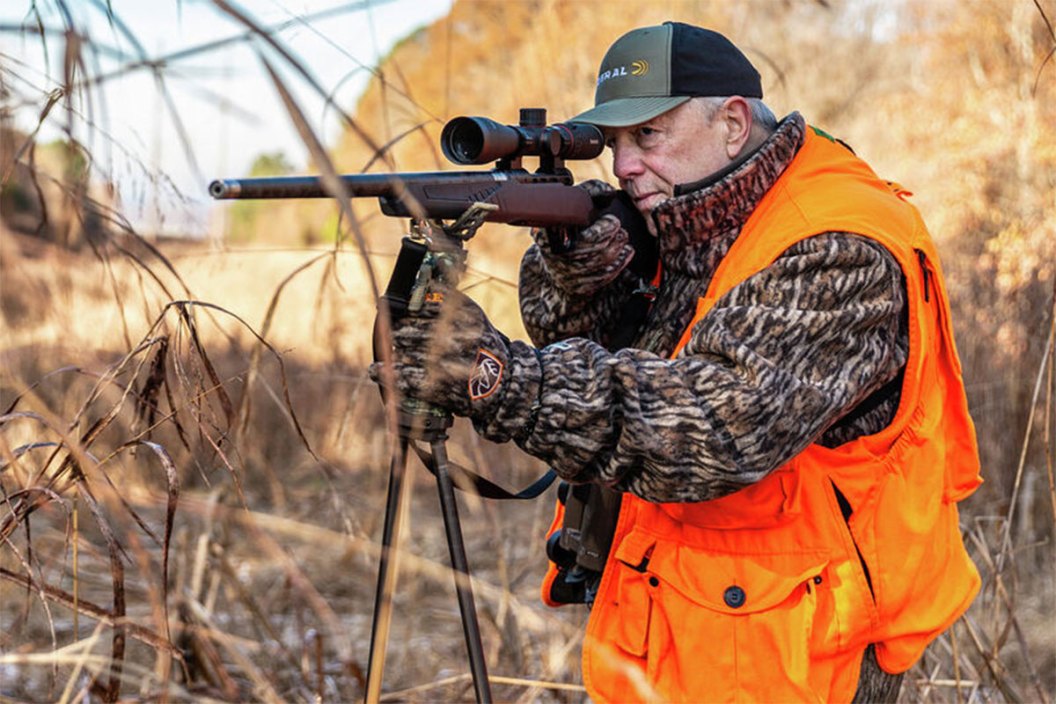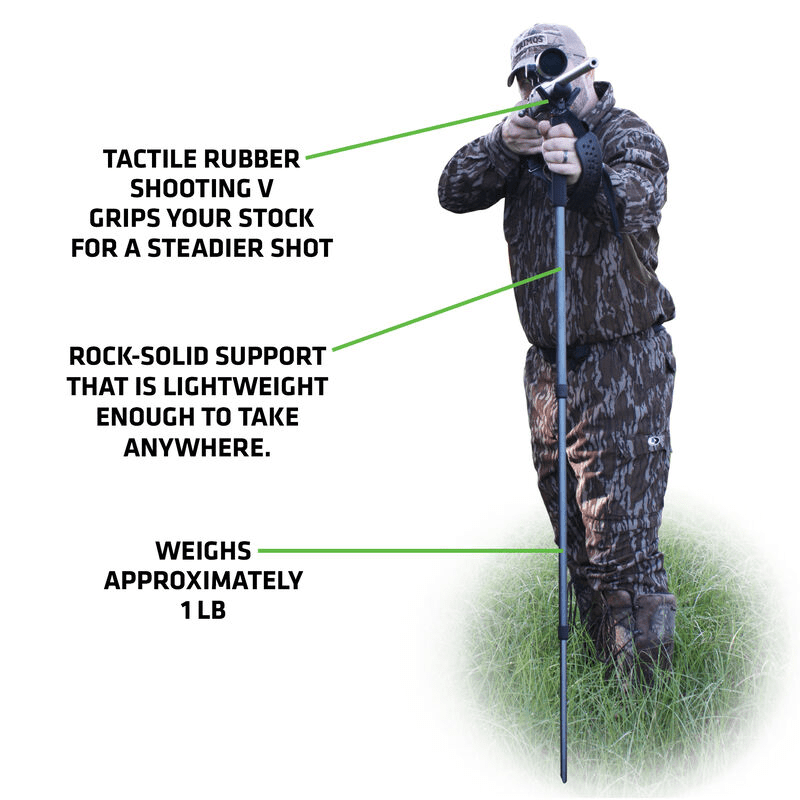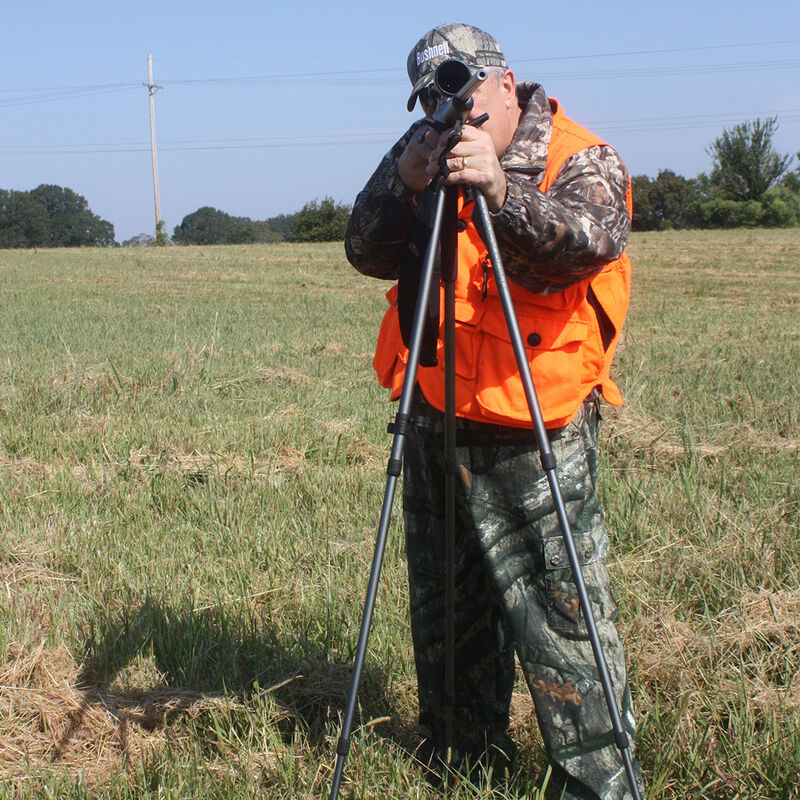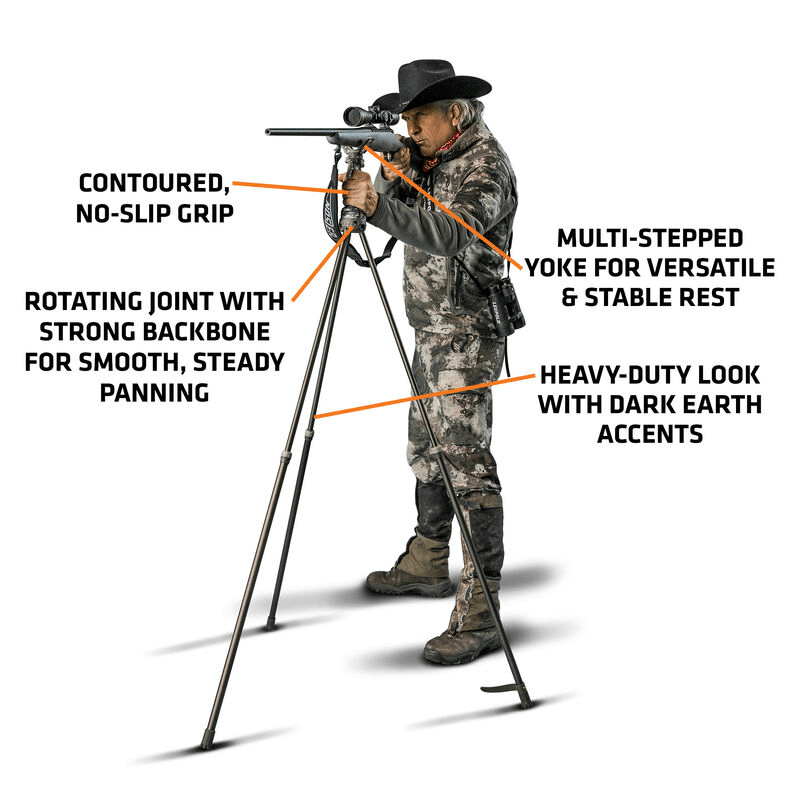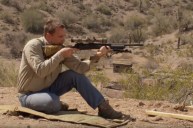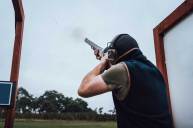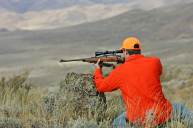If you've ever thought about using shooting sticks, then this is your chance to find out what they're all about.
Shooting sticks are a simple device that serve as a stabilizer to rest your firearm on to steady it before, during, and after you take the shot. They can also double as a walking stick in some cases, but is mainly a base used as a portable firearm mount sometimes used by field shooters, soldiers, and military snipers.
They can have one, two or three legs and most commonly are used with rifles to provide a forward rest and reduce motion. The difference between shooting sticks and a traditional monopod, bipod, or tripod is that the sticks aren't attached to the firearm. We'll still refer to different styles by those names, but just know that the shooting sticks we're talking about aren't connected.
Shooting sticks are nowhere near as common in the hunting communities of the United States as they are in African countries, for instance.
Shooting sticks are versatile and quite useful when it comes to lining up big game animals, and what ethical hunter doesn't want the best shot possible, and a clean kill? These multipurpose tools have started to rise in popularity in the U.S., and all of North America for that matter.
Let's explore how to use them, what brands work well, and how to make one of your own.
Reasons to Use Shooting Sticks
https://www.youtube.com/watch?v=H2sGXcmaACQ
Regardless of the exact type or brand, shooting sticks provide a hunter or shooter with something that we all want when the moment of truth arrives: a stable shooting rest. This way, the hunter has a higher degree of control over adjusting the shooting height, aiming, and making a quicker decision as to whether or not to take the shot.
While they don't provide as much stability as a bench rest, shooting sticks provide an additional steadiness that's absolutely essential for making precise shots, especially at longer range. They're much more portable and obviously cheaper than a bench, but we can't take a shooting bench into the field with us anyway.
As outfitters in the African bush will tell you, getting shots away through the thick vegetation is nearly impossible, but with a shooting stick, that all changes.
For North American hunters, this can be quite useful out on the prairies when concealment is at a minimum. When there's only a small amount of cover to hide you from a pronghorn antelope or a mule deer, you're going to have to use it. The ability to quickly move to that cover and set up a shot is vital, and shooting sticks will help.
Now the hunter can be concealed and shoot over the vegetation (or even a decoy) instead of trying to shoot around it. While the prone shooting position is great for taking shots in wide-open country with very little vegetation to obscure the hunter from the target, the standing, kneeling, and sitting positions are all much better suited for hunting situations where it's necessary to shoot over grass or brush. Shooting sticks make it all possible.
The upside is that modern shooting sticks with folding or collapsible legs are relatively easy to carry. Shooting sticks can also serve as a walking stick or a trekking pole while some of the better models of shooting sticks have interchangeable heads that allow the hunter to mount a spotting scope, crossbow, handguns, or even a camera.
Monopod Shooting Sticks
Monopod shooting sticks, as the name implies, come with one leg that can usually be adjusted to set the correct height for the specific situation.
These are without a doubt the simplest of the three types of shooting sticks and offer the hunter a decent amount of accuracy and, perhaps more importantly, high mobility. It is often the choice of the most mobile hunters who prefer to stay on their feet while hunting.
It is a fast, convenient, and effective way to hunt, but the downside is that it does have a little sway since there are no additional legs to offer stability. In the vertical position, it can keep your gun in place, but not always perfectly steady.
Bipod Shooting Sticks
Bipod shooting sticks are a step up from the monopod shooting sticks in that it gives the hunter an additional leg to stabilize it. While they are a slightly more complicated unit, and also a bit heavier when compared to a single leg shooting stick, they bipod unit makes the shot more balanced.
Maybe the best thing about bipod shooting sticks is that they take away the side to side wiggle that you get with monopod shooting sticks. The downside it is that it is not quite as portable, requires a slightly longer time to set up, and still sacrifices some stability.
Tripod Shooting Sticks
Tripod shooting sticks come with three legs and offer the highest amount of stability that a hunter could ask for. With this type of shooting stick, the hunter can control both vertical and horizontal movement while increasing the chances of a great shot and a cleaner kill.
However, tripod shooting sticks further hinder mobility, add more weight, and can increase complications when setting up the unit since there are more moving parts.
A tripod shooting stick serves best when you use it in a controlled setting that gives you time to set up completely such as stalks that provide a lot of cover from a distance.
A Few of the Best Shooting Sticks
As with any listing of the "best" devices, it is a subjective thing at best, but it is an easy way to identify a few of the highest-rated and most discussed tools among the hunting community.
Here are a few of the ones that get talked about the most.
Primos Trigger Stick GEN3
There is both a Tall and Short version from Primos, with the ranges equalling 24" to 62" and 18" to 38" respectively.
Here's a quick clip of Jim Shockey, spokesperson for Primos and longtime professional hunter, sharing the info on the Trigger Stick Gen 3 when it first came out.
According to Primos, their "Patented Trigger Stick has been upgraded to perform even better. By far it is the quickest most effective way to get a rock solid shooting support. We have advanced our design by incorporating a Quick Detach Yoke System that allows for easy transitions from a shooting stick to a smooth panning support for optics or cameras."
Primos Pole Cat Monopod
You can stand or kneel with the Pole Cat Monopod from Primos, as it stretches from 25" to 62". At approximately 1 pound, it's about as light as you'd ever expect a hunting shot stabilizer to be.
It won't rust and the rubber "V" shaped rest helps secure your firearm in place.
Bog Deathgrip
If you're going to call your product the "Deathgrip," you'd better make sure it has a tight hold. Bog touts durability, stability, and versatility with their tripod, which includes a headclamp that can actually hold your firearm in place without you even touching it.
It might take some getting used to, but when the Deathgrip works as intended, it's one of the best available.
Vanguard Quest T62U
The Vanguard Quest has been around for a little longer than some other, newer offerings, but still holds up. The yoke swivels 360 degrees, is super comfortable to use, and has superior traction on the feet.
You can also move awful swiftly with these shooting sticks, considering they're under 2 pounds and they fold down to under 2.5 feet long.
Making a Shooting Stick in the Field
Of course, not everyone wants to spend the money on a mass-produced set of shooting sticks, and would prefer to make their own. There are plenty of resources available showing a few different approaches, but these two following videos represent the basics.
Find what works for you, and you'll save on the expenses of a branded set of shooting sticks.
Considering how easy he made that look, you'll likely be able to do something similar, or at least adequate, with the supplies you've got at your disposal.
Here, Mark Kayser shows how to create your own shooting sticks from manmade items, which requires a quick trip to the home improvement store for supplies. It's likely long-lasting than anything made out of wood or branches, but does involve some upfront costs and DIY ingenuity.
Wrapping Up
Most good manufactured shooting sticks will have some of the same things in common: a swivel head adapter, camo features, multiple attachments for both shooting, spotting, and picture taking, plus a lightweight and sturdy construction. They should work well in a blind as well as out in the open, and be able to adjust to the shooter's specific size and preferences.
Short tripods, short bipods, and short monopods all have their place, but some hunters and outfitters need to stretch their legs and their limits in the open country.
Whether they are U-shaped or V-shaped, you'll want to look for materials that are strong and light, such as carbon fiber, for ease of carrying. Whether or not they fold or telescope, you'll have to consider your own style when deciding on a shooting rest for your hunting needs.
Not every hunter wants or needs shooting sticks, but for those who do, they can be the difference between a good shot and a great shot.
Looking for a little more or even hot lunch for your hunting blind? Follow my webpage, or on Facebook and Twitter.
NEXT: THE BEST BLACK POWDER RIFLES HAVE THESE THINGS IN COMMON
WATCH
